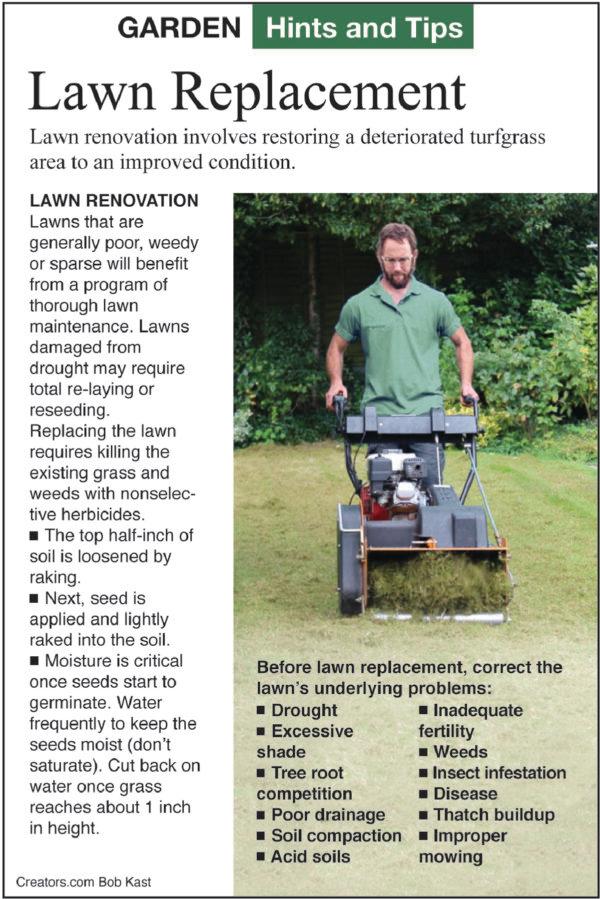Insects tend to leave evidence of their presence. In this case, grubs could have eaten the roots and killed the grass, but in general, when grubs damage roots, they don’t eat them all and the grass becomes like fresh sod with a smaller root system that can be watered. As the new roots grow, the lawn recovers. If you lift up on the top of the grass and it comes up with the roots, then start watering to keep it growing. In your case, pulling up on the top yields nothing, so it’s probably not grub damage.
In the “everything else” category, we have how the lawn was cared for. I assume this area received the same care as the rest of the lawn, such as the same fertilization and mowing height.
The whole lawn was exposed to a drought this summer, but the rest of the lawn doesn’t look like this, so is the soil in this area of poorer quality? To rule out a soil problem, dig down six to eight inches to see if the soil is black at that depth. Compare several areas in both the dead and green areas. Since this hasn’t happened before, the soil is probably fine.
Was there a mole problem or anything else that could have stressed this area of lawn, such as a party tent or some other activity?
The final category is diseases. There are many diseases of lawn grass species. Most only damage a few leaves and the plant recovers. Most of the diseases are caused by fungi that infect a leaf. The infected area dies and turns brown, while affected areas on each side of the dead spot turn colors like red, yellow, or purple. As the disease spreads in the leaf, the whole leaf turns yellow or brown. In many cases, that is the extent of the damage. These diseases are called leaf spot diseases because that is what they do. A close inspection of the grass will reveal grass blades with these spots.
If the disease organism spreads into the crown of the grass plant or into the roots, then the whole plant dies. Usually, this only happens to small areas the size of a dinner plate or smaller. If the conditions are right, large areas of lawn grass can die. This is called “melting out” and it is caused by several different fungi; all lawn grass species are susceptible. The fungi often infect the plant in cool, wet spring weather, but the grass plant doesn’t die until warm summer weather. By the time the grass dies, it is way past time to do anything about it.
So, what do you do with a dead lawn? You will need to replant the lawn, but you may consider creating larger flower beds to reduce the size of the lawn.
Look at the area and decide if any changes need to be made to the drainage or the soil, such as core aeration to relieve compaction, and make those changes first. Use newer varieties of grass, as some of them are more disease resistant. In the future, mow the grass to the height recommended for the grass species planted. A larger top will support a larger root system, and the plant will be stronger and more tolerant of stress such as drought conditions. Don’t fertilize too early in the spring, since forcing the grass to grow at the wrong time could lead to more infections by fungi.
And lastly, consider using a fungicide treatment in the spring. These treatments can be expensive and since the availability of chemical controls varies so much, I can’t tell you the products to use, but your local extension office should be able to help.
Lawn grasses are very tolerant of being chopped up by lawnmowers and run over by kids and pets. They are the first choice to cover large areas of ground with a durable erosion-resistant covering, but they do need proper care. Whenever you are mowing the grass, look for signs and symptoms of problems. The earlier you find a problem and begin treatment, the less work it will take to fix the problem.






